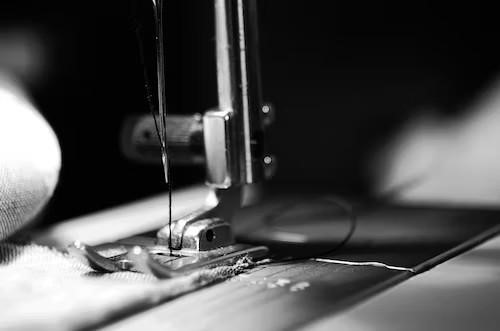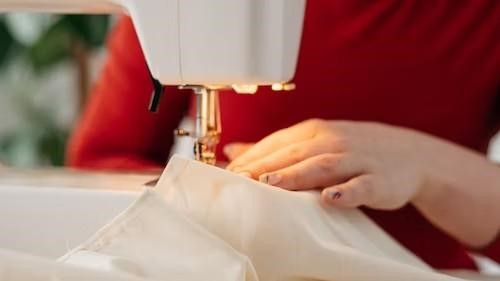
Subscribe To Emails
Subscribe to the YourCotton mailing list to receive updates on new arrivals and promotions (about once every 6 weeks)!

Do you love the idea of having your unique style and staple to wear on special occasions? Does seeing interesting dresses at stores make you wonder how they were made? If so, why not try your hand at sewing one yourself? Sewing a dress from scratch might seem like an intimidating task, but it’s easier than it looks. With the right instructions and materials, you can create a stunning dress that reflects your personality and speaks for itself. This article will provide step-by-step instructions on how to make a beautiful designer dress with materials lying around in your home. From getting supplies to selecting fabric design - each phase is covered here in this guide! Dive into the magical realm of designing and crafting custom attires today!
As a beginner in dressmaking, you can make a dress with a basic dress pattern and the right tools. Brush up on your skills beforehand, like figuring out how to best stitch and use a sewing machine. To make dressmaking easier when starting, opt for a simple dress silhouette that calls for thin and pliable dress fabric.
When you get to the dress pattern, pay special attention to the shoulder seams because doing these well will help the dress hold its shape over time. Also, remember to make sure that you are accounting for seam allowance in your measurements when following the dress pattern. With both consumer-grade and online tutorials available, as well as plenty of dress patterns for every skill level, there's no better time than now to learn how to make your dress.
Before you dive into your exciting DIY sewing project, make sure to read these clever tips and hacks for a smoother ride.
1. Carefully select the best fabric for your project. If you are just starting, try using a cotton blend material that is simple to stitch and thick enough so that it won't be see-through; otherwise, you may need an additional slip layer.
2. For your initial dressmaking endeavor, opt for a fundamental pattern sans any additional details such as ruffles, puff sleeves, or pleats. A beginner-friendly choice could be an A-line sleeveless gown, shift cut, or even drop waist number!
3. Before cutting your fabric, pre-shrink it in the washing machine to ensure that it will not shrink any further after the first wash. After drying, iron out all wrinkles for a crisp and beautiful look!
4. Take your time and savor the process. Creating a dress is an art form, so don't rush through it! Ensure accuracy when you take measurements and cut out fabric pieces; remember that making a dress requires more cloth than other sewing projects. By taking great care to triple-check each step along the way, you will soon have completed your first masterpiece of fashion design!
5. Always utilize razor-sharp tools when cutting fabric, such as a specialized cutter. Additionally, equip your sewing machine with fresh needles for the clearest and most accurate results.

Follow the step-by-step instructions to sew a beautiful and simple garment that will become one of your favorite pieces.
Before starting any sewing project, it is important to first establish your workspace. Before laying out your fabric, make sure you have plenty of room to unfold it completely. Placing a mat underneath can also help protect your surface from scissors and sewing pins while sewing.
If you are working with a sewing pattern, lay the pieces on top of knit fabric and line them up according to the instructions. When sewing a dress that requires intricate stitching, pay close attention to the basic pattern for accurate results. Once you have your supplies laid out correctly, you will be ready to sew a beautiful dress that looks as though it came straight off the rack!
Laying out sewing patterns onto the fabric is an essential part of the sewing process! You'll need to make sure you use pins to keep your pattern pieces in their place and mark them using tailor's chalk.
When it comes time to cut, leave a half-inch seam allowance on the sides and bottom - this small addition provides you with breathing room that will allow you to join together pattern pieces for more intricate sewing projects like French seams and hand sewing for simple shift dresses.
To ensure a professional look, a zigzag stitch is typically used to sew the seams of a simple shift dress. Start by following your pattern instructions and lay the two main pieces of fabric (usually front and back panels) right sides together so that their edges match. Sew up the side seams, stopping at each armhole.
Next, poke out some sewing darts in the shoulder area to make it fit better across your body before folding over one-quarter of an inch of fabric towards the inside of the garment, all the way around each armhole, and pressing with an iron. Finally, sew the shoulder seams together with a sewing machine to finish both armholes.
The two most popular necklines are the scoop and V-neck. If your pattern requires a more intricate shape, then please follow those instructions to the letter. However, if you're aiming for a basic neckline, simply fold over the top one-quarter inch of fabric so that the raw edge is hidden. Give it a press with an iron, and voila! To finish the neckline, sew the seam. Hemming the bottom of the dress is done similarly: fold over a quarter-inch of fabric, press it down, and straight-stitch it to cover the raw edge.

A tape measure is a perfect tool for cutting a small slit at the back of your dress' neckline, one that matches the exact length of your zipper. Adding this closure will make it simpler to wear and take off; however, if you picked out a fabric or shape that can be put on over the head with ease, then you don't need to do any sewing.
And that's it! You've now completed your very own hand-sewn dress. Give yourself a round of applause—you did it! Whether you plan on wearing your new creation or giving it away as a gift, we hope this guide helps demystify the sewing process for you. Sewing is a fun and creative activity that anyone can enjoy with a little bit of practice. We hope you'll give sewing another try (or maybe even sew something else from our list of beginner sewing projects).